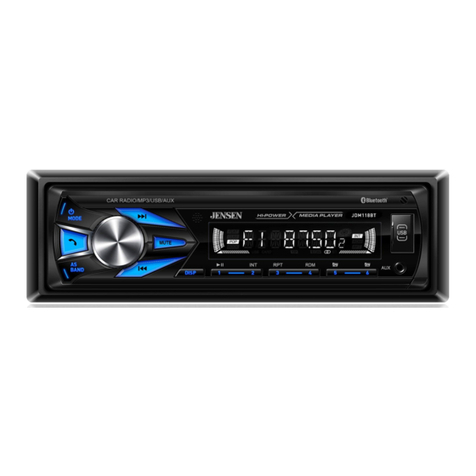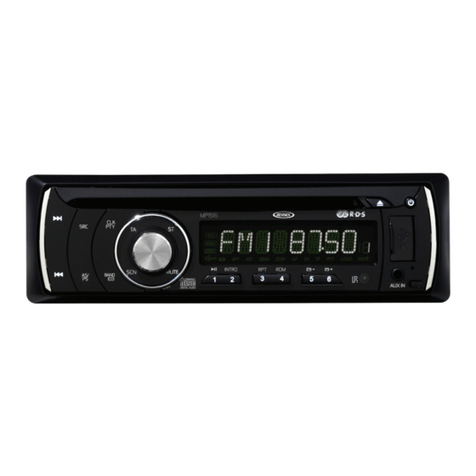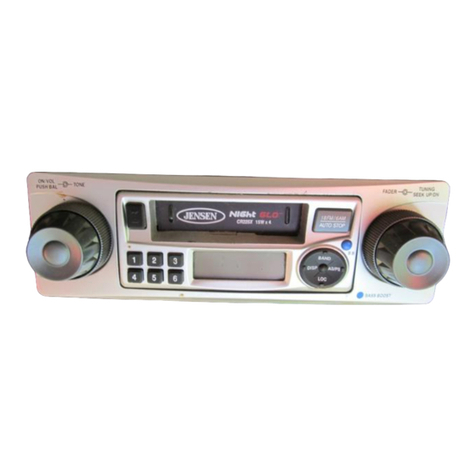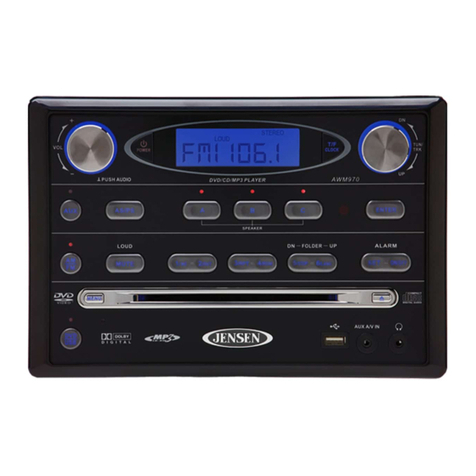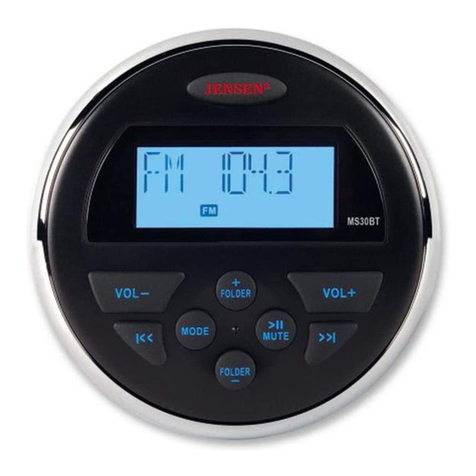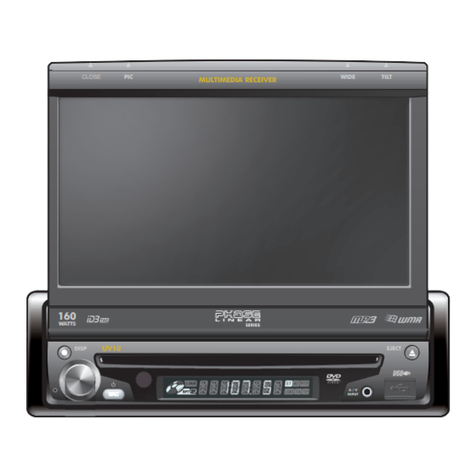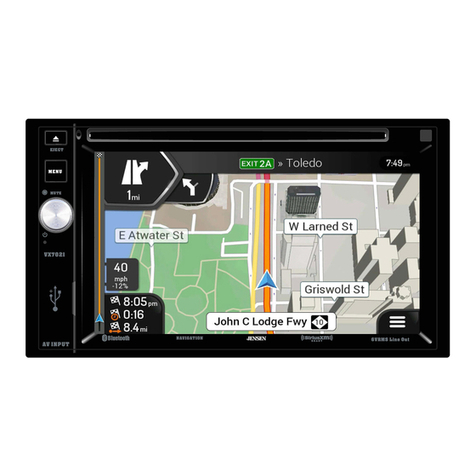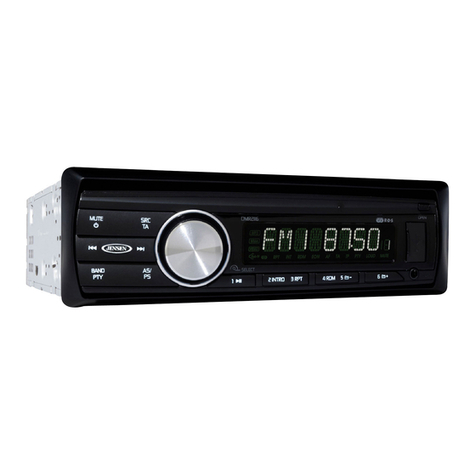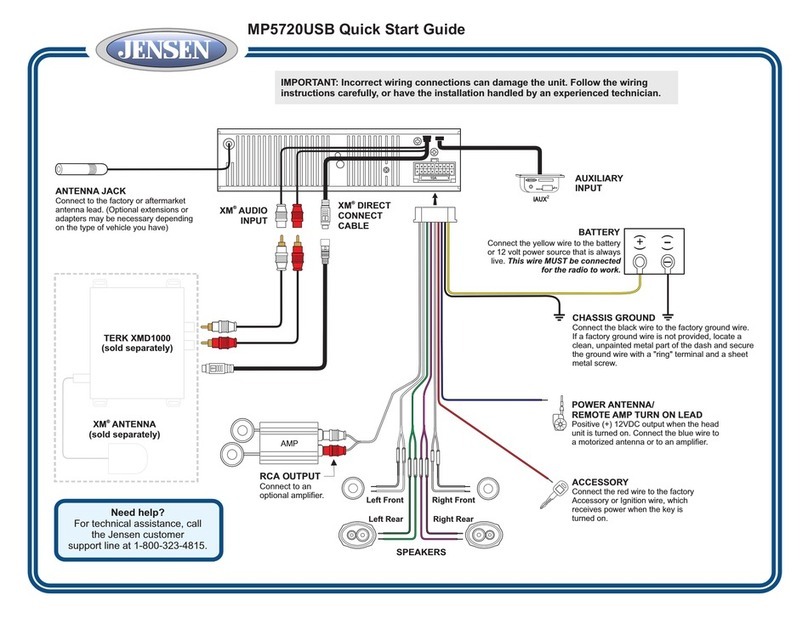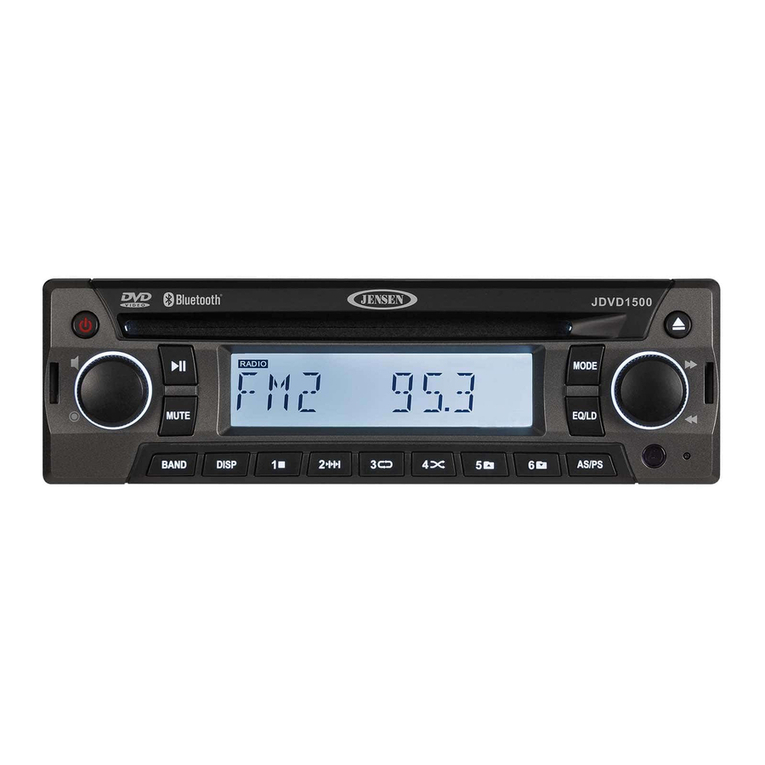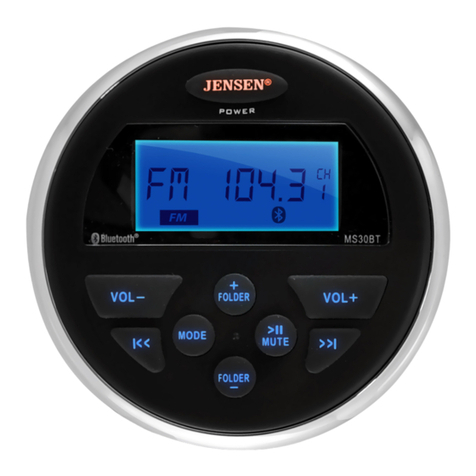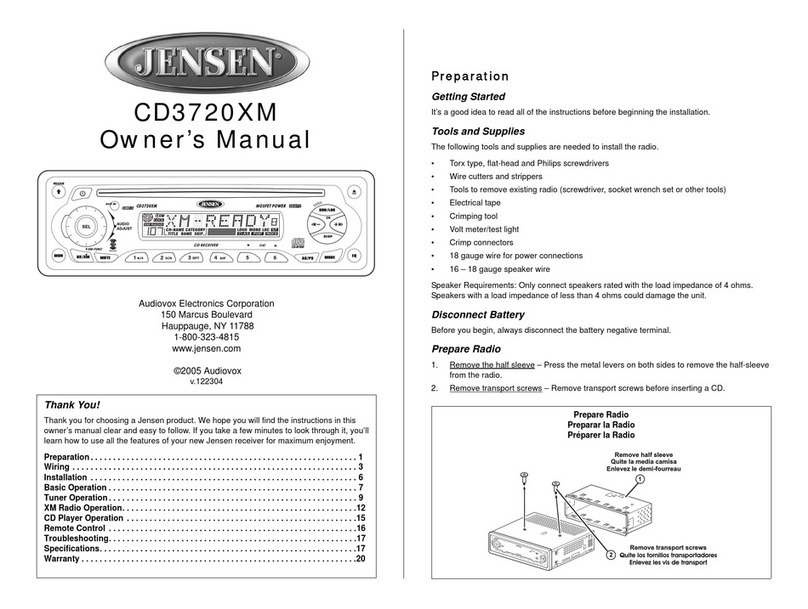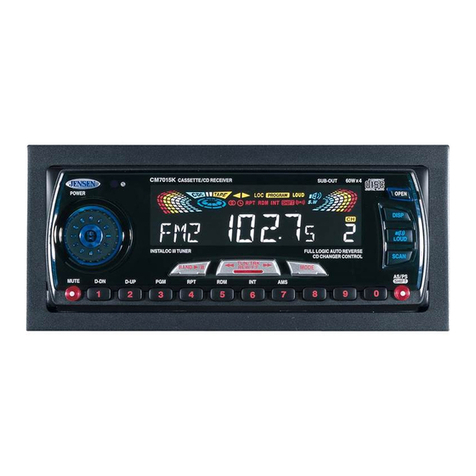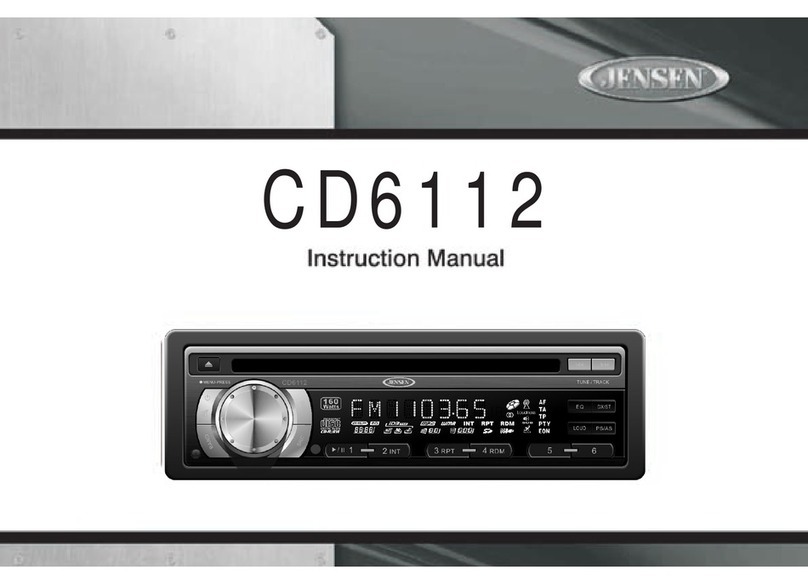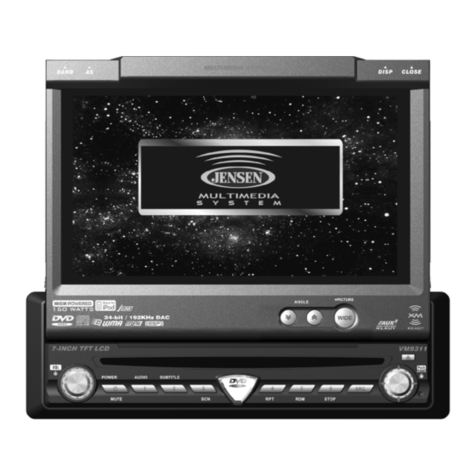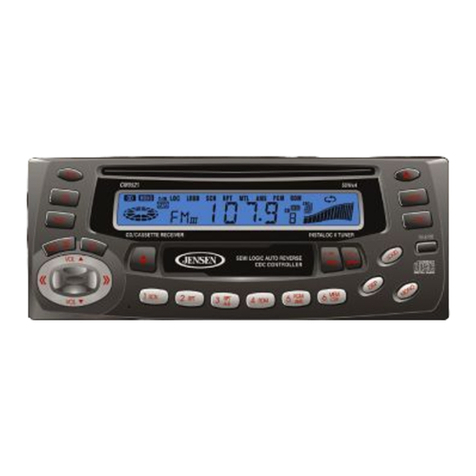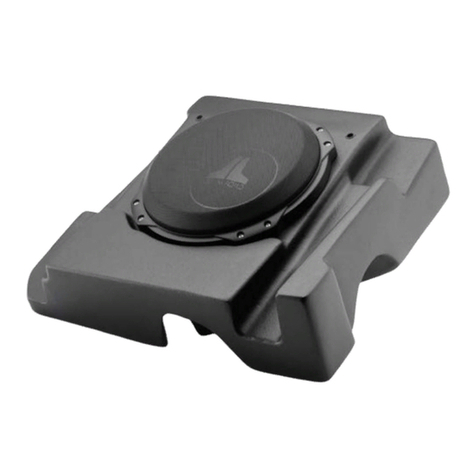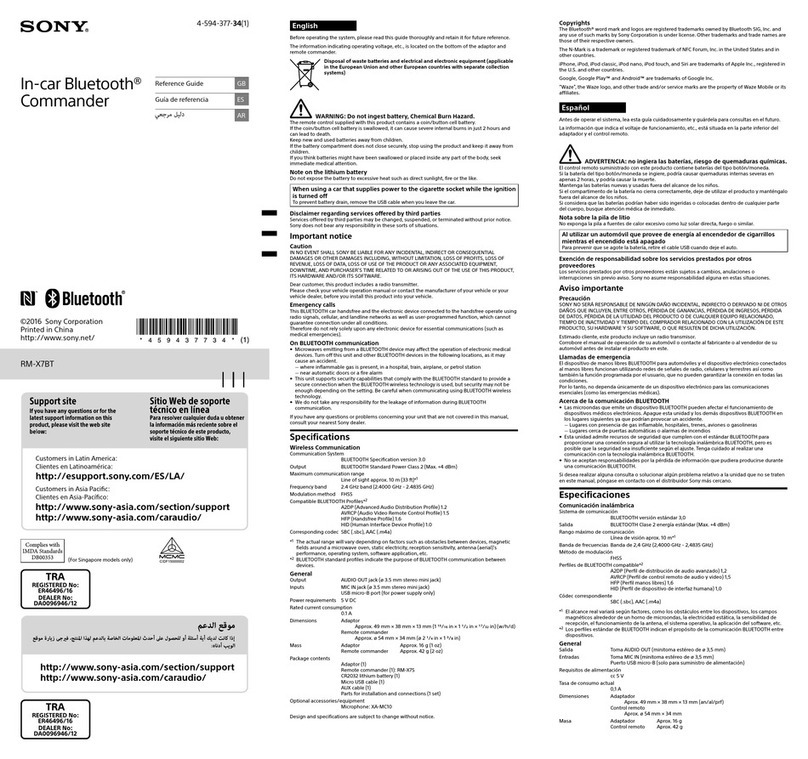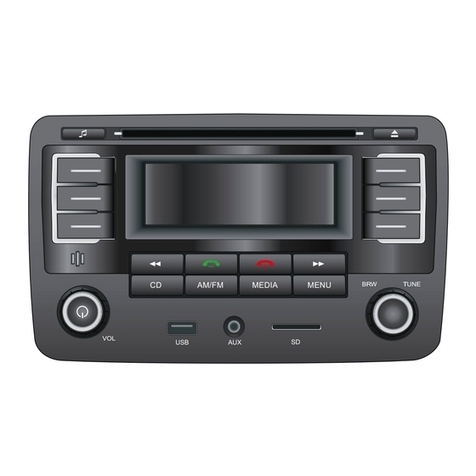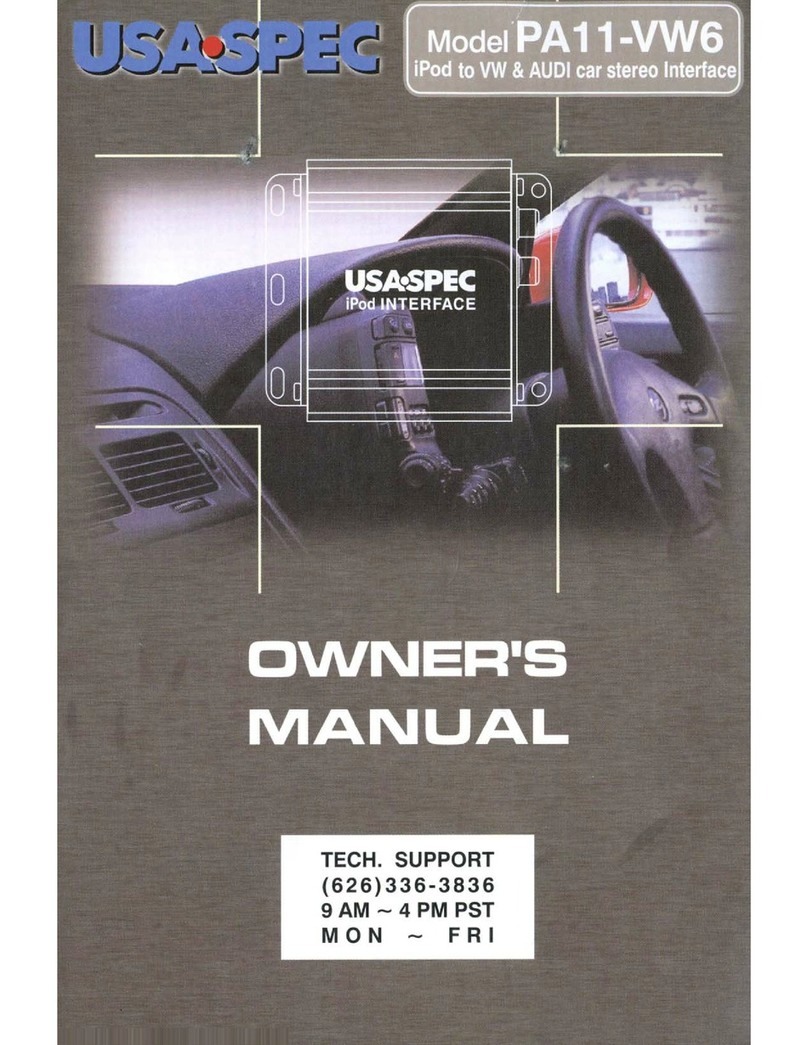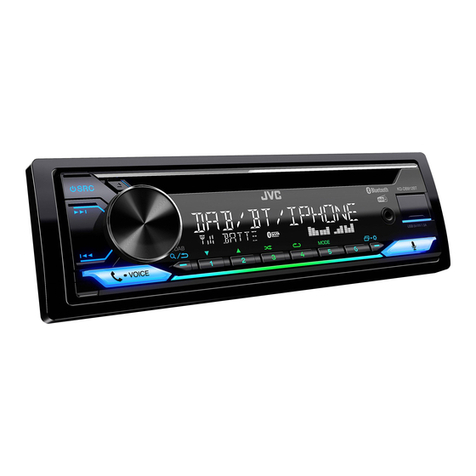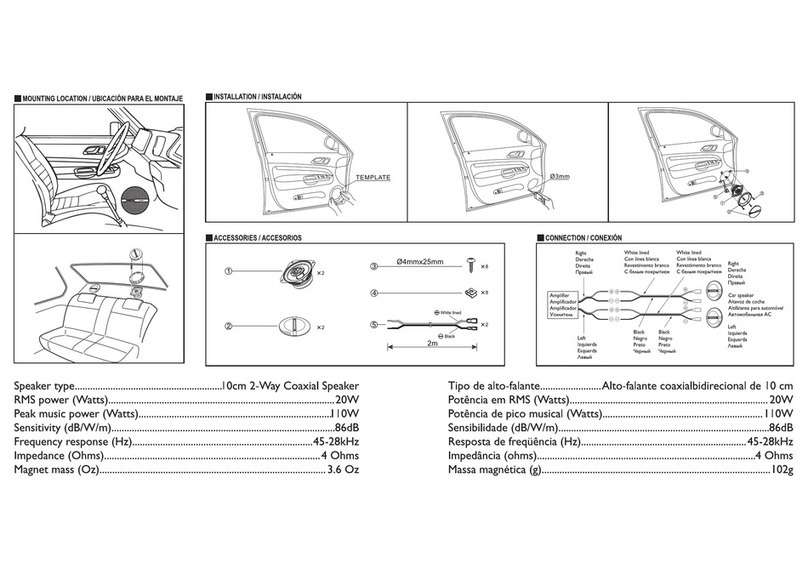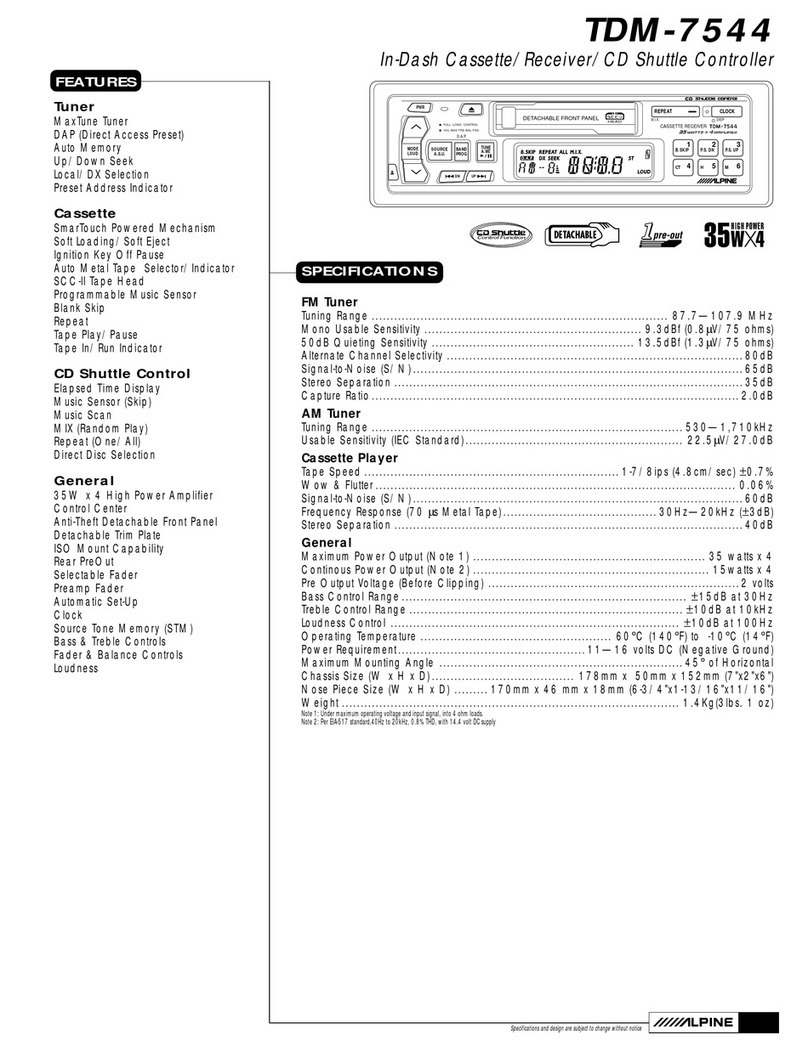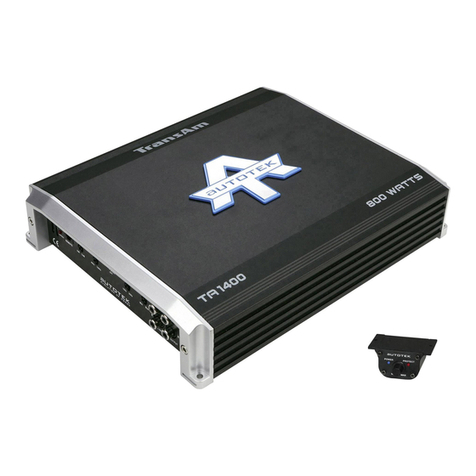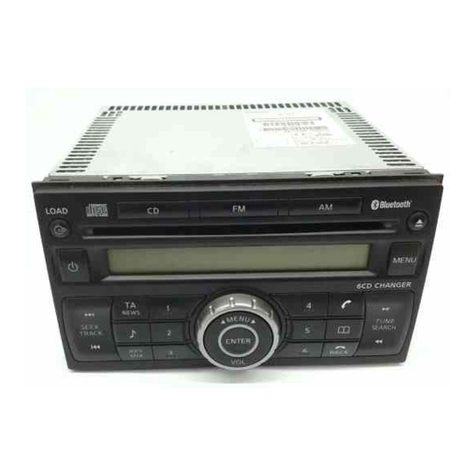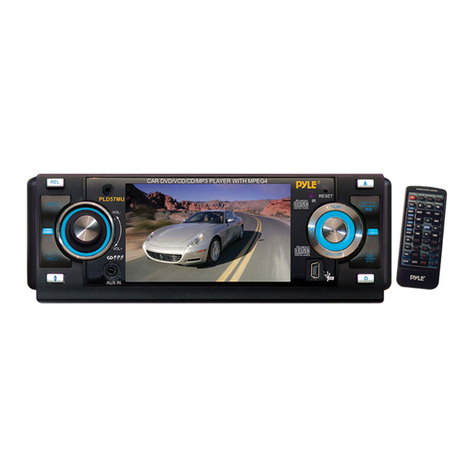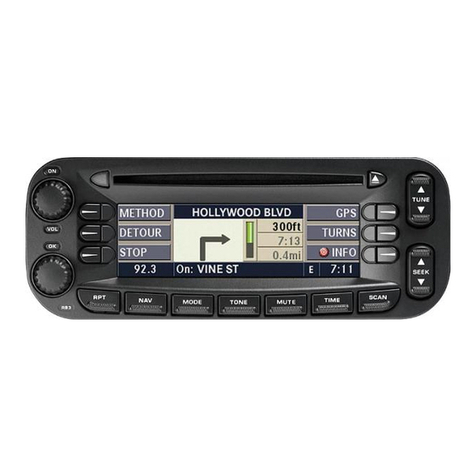6
• If this unit is installed in a vehicle that does not have an ACC (accessory) position
on the ignition switch, the red lead of the unit should be connected to a
terminal coupled with ignition switch ON/O operations. If this is not done, the
vehicle battery may be drained when you are away from the vehicle for several
hours.
• Secure the wiring with cable clamps or adhesive tape. To protect the wiring,
wrap adhesive tape around them where they lie against metal parts. To avoid
short-circuiting, cover all disconnected lead with insulating tape. There is a
possibility of short-circuiting if the leads are not insulated.
• Route and secure all wiring so it cannot touch any moving parts, such as the
gear lever and handbrake. Do not route wiring in places that get hot, such as
near the heater outlet. If the insulation of the wiring melts or gets torn, there is a
danger of the wiring short-circuiting to the vehicle’s body.
• Don’t pass the yellow lead through a hole into the engine compartment to
connect to the battery. This will damage the lead’s insulation and cause a very
dangerous short.
• Do not short any leads. If you do, the protection circuit may fail to work when it
should.
• Never feed power to other equipment by cutting the insulation of the power
supply lead of the unit and tapping into the lead. The current capacity of the
lead will be exceeded, causing overheating.
• Since an unique audio I/C circuit is employed, never wire the unit so the
speaker leads are directly grounded or the left (-) and right (-) speaker leads are
common.
• When this product’s source is switched ON, a control signal is outputted
through the blue lead. Connect to an external power amp’s system remote
control or the car’s Auto-antenna relay control terminal (max. 300mA 12 V DC). If
the car features a glass antenna, connect to the antenna booster power supply
terminal.
• When an external power amp is being used with this system, do not connect
the blue lead to the amp’s power terminal. Likewise, do not connect the blue
lead to the power terminal of the auto-antenna. Such connection could cause
excessive current drain and a major malfunction. Refer to the relevant owner’s
manual for details on connecting the power amp and other units, then make
the connections correctly.
• Do not block any vents or heater panels. Blocking them will cause heat to build
up and may result in re.
• Make sure that the unit has a good chassis ground. A good ground connection
will eliminate most electrical noise. A good chassis ground requires a tight
connection to the vehicles metal chassis. The area around the ground
connection should be clean, bare metal without rust, paint, plastic or dirt.
